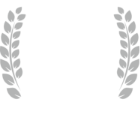Award cycles for the ATS Research Program unrestricted, diversity, and partner grants have recently been updated to align with the calendar year. Please review the timeline below for further details.
- All grants are targeted towards early-career investigators, unless stated otherwise.
- You will be required to take an eligibility quiz to gain access to the letter of intent.
- Be sure to check your eligibility before beginning the quiz as once submitted, your answers cannot be changed.
- We strongly advise reviewing the eligibility criteria, instructions and the information below.
- Already started an LOI? Log in to continue where you left off.
- Questions? Review the FAQs
- If your question is not answered there, contact the ATS Research Program
Timeline
| Grant Portfolio Opens | January 21, 2025 |
| Letters of Intent Due | March 12, 2025, 11:59 PM EST |
| Invitations to Applicants | May 2025 |
| Full Applications Due | July 1, 2025, 11:59 PM EST |
| Award Notification | September 2025 |
| Grant Start Date | January 2026 |
ATS Diversity GrantOne grant available$40,000 for one year |
|
Target audience: Early-career investigators from underrepresented populations in the biomedical, clinical, behavioral, and social sciences research enterprise. Investigators may be working in basic science, translational, or clinical research in pulmonary, critical care, and sleep medicine. International researchers are welcome to apply. |
|
Definition of diversity: A. Individuals from racial and ethnic groups that have been shown by the National Science Foundation to be underrepresented in health-related sciences on a national basis (see data) and the report Women, Minorities, and Persons with Disabilities in Science and Engineering). The following racial and ethnic groups have been shown to be underrepresented in biomedical research: Blacks or African Americans, Hispanics or Latinos, American Indians or Alaska Natives, Native Hawaiians and other Pacific Islanders. In addition, it is recognized that underrepresentation can vary from setting to setting; individuals from racial or ethnic groups that can be demonstrated convincingly to be underrepresented by the grantee institution should be encouraged to participate in NIH programs to enhance diversity. For more information on racial and ethnic categories and definitions, see the OMB Revisions to the Standards for Classification of Federal Data on Race and Ethnicity.
Students from low socioeconomic (SES) status backgrounds have been shown to obtain bachelor’s and advanced degrees at significantly lower rates than students from middle and high SES groups (see more here), and are subsequently less likely to be represented in biomedical research. For background see Department of Education data: Advancing Diversity and Inclusion in Higher Education and https://nces.ed.gov/. D. Literature shows that women from the above backgrounds (categories A, B, and C) face particular challenges at the graduate level and beyond in scientific fields. (See, e.g., From the NIH: A Systems Approach to Increasing the Diversity of Biomedical Research Workforce). |
|
In 2026 the Research Program will award one diversity grant of $40,000/one year for salaries, supplies, or a combination of these two. This research for this grant is unrestricted as long as it is in the areas of pulmonary, critical care, or sleep medicine. Indirect costs will not be paid to the sponsoring institution. |
|
Award-specific eligibility: |



